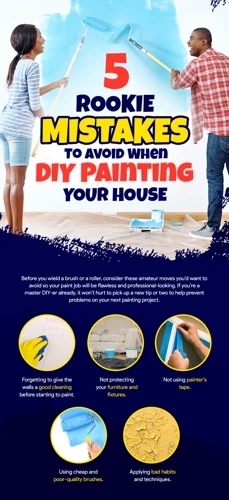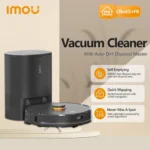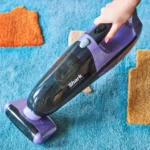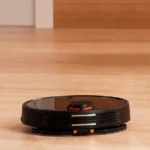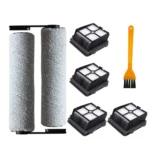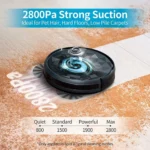Have you ever wondered why your vacuum cleaner isn’t performing as well as it used to? The answer might lie in the brush roller. A dirty or damaged brush roller can significantly decrease the suction power of your vacuum, and even cause it to scratch your floors or rugs. However, cleaning brush rollers can be a tricky task that requires attention to detail. In this article, we will discuss the most common mistakes people make when cleaning brush rollers and how to avoid them. By the end of this article, you’ll have all the knowledge you need to keep your vacuum performing at its best. So, let’s get started and tackle those brush rollers!
Mistake 1: Using Water or Liquid Cleaners
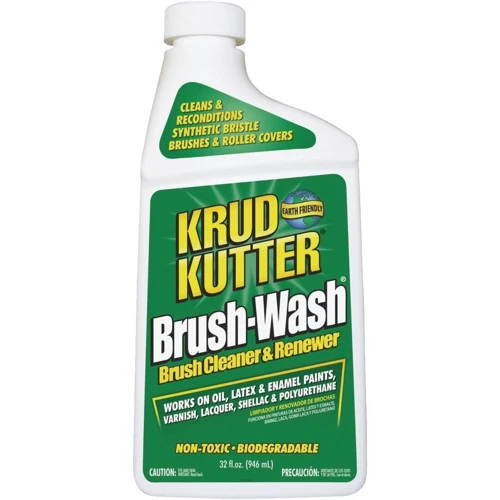
Are you using water or liquid cleaners to clean your brush rollers? You may be unknowingly damaging your vacuum and decreasing its performance. Cleaning brush rollers is an important aspect of maintaining your vacuum cleaner’s efficiency and lifespan. Using the wrong cleaning method can lead to mold and mildew growth, clogged bristles, and even motor damage. It’s essential to know the Dos and Don’ts of brush roller cleaning to maintain your vacuum’s top-notch performance. In this article, we will discuss the first common mistake to avoid when cleaning brush rollers and provide you with the best cleaning solutions. You can also check out our [Cleaning Brush Rollers Guide] for more tips on proper brush roller maintenance.
Why it’s a mistake
Using water or liquid cleaners to clean brush rollers is a common mistake that most people make. Water or any other liquid can damage the brush rollers, especially those that are made up of natural hair or fibers. The water will cause the fibers to clump together and lose their shape, making them less effective in picking up debris from your carpets or flooring. Additionally, liquid can seep into the motor and other parts of the vacuum cleaner, leading to more serious problems.
Not removing obstructions from the brush rollers can also lead to several problems. Obstructions such as hair, debris or strings can wrap around the brush roller, causing it to stop working. If these obstructions are not removed in time, they can damage the brush roller or even the motor of the vacuum cleaner. Often times, people continue to use the vacuum cleaner without realizing that there is an obstruction present, which can cause the problem to worsen over time.
Not checking manufacturer’s instructions before cleaning brush rollers is another common mistake that many people make. The manufacturer’s instructions provide important guidelines and recommendations for cleaning the brush rollers of your vacuum cleaner. Failing to follow these instructions can cause damage to the vacuum cleaner or even void the warranty.
Using dirty tools to clean the brush rollers can also lead to problems. When the tools are dirty, they can transfer dirt and debris onto the brush rollers, making the cleaning process ineffective. This can lead to reduced vacuum performance and poor cleaning results.
Not removing hair or debris from the brush rollers can also lead to poor vacuum performance. Hair and debris can accumulate on the brush rollers, which reduces their effectiveness in picking up dirt and debris. In severe cases, the brush rollers may stop working completely, leading to decreased vacuum performance.
Not replacing worn rollers is also a common mistake that many people make. Over time, brush rollers can become worn out and less effective in cleaning carpets and flooring. If the worn rollers are not replaced, the vacuum cleaner will perform poorly, and you may even damage the motor. It is important to replace worn rollers promptly to ensure optimal vacuum performance.
Using too much force to clean brush rollers can also damage the brushes. Excessive force can cause the fibers to become bent or twisted, reducing their effectiveness in picking up dirt and debris. If you apply too much force, you can also damage the motor or other parts of the vacuum cleaner.
Not cleaning brushes regularly can cause dirt and debris to accumulate in the brush rollers. Over time, this buildup can reduce the effectiveness of the brushes and contribute to reduced vacuum performance. To ensure optimal performance, it is important to clean the brushes regularly.
It is important to avoid these mistakes and take proper care and maintenance of your vacuum cleaner’s brush rollers. This will not only prolong the life of the vacuum cleaner, but it will also ensure optimal vacuum performance for years to come. For more information on cleaning brush rollers, check out our cleaning brush rollers guide.
What to use instead
When it comes to cleaning brush rollers, it’s important to avoid using water or liquid cleaners. Instead, opt for dry cleaning methods that won’t damage the bristles or the motor of your vacuum cleaner.
One effective method for cleaning brush rollers is to use a clean cloth or a soft-bristle brush to gently remove any loose dirt and debris. You can also use a specialized cleaning tool designed for cleaning brush rollers, which can help to remove stubborn dirt and debris without damaging the bristles.
Another option is to use a vacuum cleaner with a brush roller attachment, which can help to remove dirt and debris from the bristles without damaging them. Just be sure to use the appropriate setting on your vacuum to avoid applying too much pressure.
Lastly, you can use a specialized cleaning solution designed specifically for cleaning brush rollers. These solutions are typically made from gentle, non-toxic ingredients that won’t damage the bristles or the motor of your vacuum cleaner. Just be sure to follow the manufacturer’s instructions carefully and rinse thoroughly with water after cleaning.
Remember, using the right tools and cleaning methods can help to keep your brush rollers in top condition and improve the performance of your vacuum cleaner. For more tips on cleaning brush rollers and maintaining your vacuum cleaner, check out our article on smart vacuum brush maintenance benefits.
Mistake 2: Not Removing Obstructions
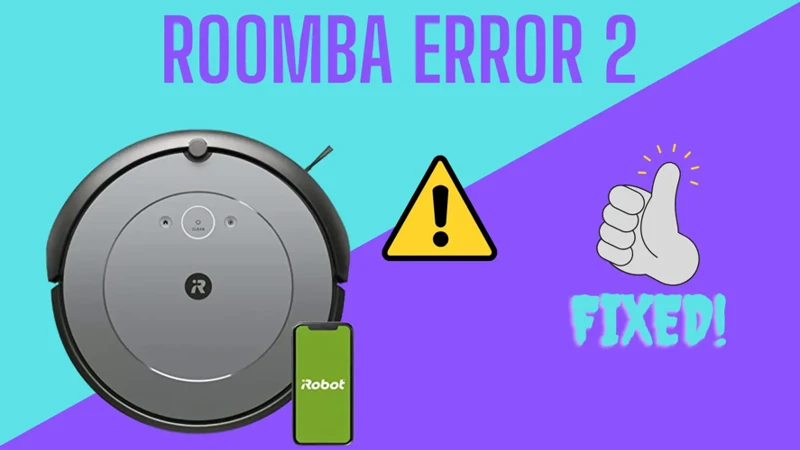
It can be tempting to quickly run your vacuum over an area without checking for any obstacles beforehand. However, failing to remove obstructions is a common mistake that can negatively impact the performance of your vacuum cleaner. If the brush roller can’t turn freely due to an obstruction, it will put extra wear and tear on the motor, which can ultimately cause it to malfunction. In order to avoid this mistake and ensure your vacuum is running smoothly, take the time to check the area for any objects that could get caught in the brush roller. Additionally, regularly cleaning your brush roller can help prevent obstructions from occurring in the first place. For more information on how to properly clean your brush roller, check out our article on cleaning brush rollers for optimal vacuum performance.
Why it’s a mistake
One mistake that people often make when cleaning brush rollers is using water or liquid cleaners. This is a mistake because liquid can damage the motorized brush roller, especially if it gets into the motor or electrical components. Water can also cause rust and corrosion to form, which can further damage the roller.
Another mistake that people make is not removing obstructions from the brush roller. This may seem like an obvious mistake to avoid, but many people overlook this important step. Obstructions such as hair, thread, and other debris can prevent the roller from spinning properly, which can lead to reduced cleaning performance and even damage to the vacuum. It’s important to regularly check for obstructions and remove them as soon as possible.
Not checking the manufacturer’s instructions is another mistake that people make when cleaning brush rollers. The manufacturer’s instructions will provide specific guidance on how to clean the roller without causing damage to the vacuum or roller. Failure to follow these instructions can lead to costly repairs and reduced vacuum performance. Make sure to always read and follow the manufacturer’s instructions when cleaning brush rollers.
Using dirty tools is another mistake that people make. Dirty tools can deposit debris onto the brush roller or cause damage to the roller during cleaning. It’s important to use clean tools that are specifically designed for cleaning brush rollers. This will help ensure that the cleaning process is effective and doesn’t cause any damage to the roller.
Not removing hair or debris is also a common mistake when cleaning brush rollers. Hair and debris can get tangled in the roller, which can lead to reduced cleaning performance and even damage to the vacuum. It’s important to regularly remove any hair or debris from the roller in order to keep it functioning properly.
Another mistake to avoid is not replacing worn rollers. Over time, brush rollers can become worn and damaged, which can reduce their cleaning effectiveness. It’s important to replace worn rollers in order to maintain peak cleaning performance and ensure that the vacuum operates efficiently.
Using too much force when cleaning brush rollers is also a mistake that people make. Applying too much force can cause damage to the roller, motor, or other components of the vacuum. It’s important to be gentle and use a light touch when cleaning rollers to avoid causing any damage.
Finally, not cleaning brushes regularly is a mistake that can lead to reduced vacuum performance and even damage to the roller. It’s important to clean brushes regularly to ensure optimal cleaning performance and prevent damage to the vacuum. Depending on the frequency of use, brushes should be cleaned after several uses or at least once a month.
How to avoid it
Mistake 2: Not Removing Obstructions
Why it’s a mistake: Failing to remove obstructions from your brush roller can cause it to become damaged and ultimately useless. When the roller is blocked by debris or tangled hair, it can’t rotate properly, which puts strain on the vacuum motor and creates a fire hazard.
How to avoid it: The first step to avoiding this mistake is to make sure the brush roller is completely turned off and unplugged. Then, using a pair of scissors or a brush comb, gently remove any hair, lint or other debris from the roller. For particularly stubborn debris, you may need to use a tool like a pair of needle-nose pliers to gently pull it out. Remember that you should never use your fingers to remove debris from the roller, as this can result in injury.
To make the process easier, you can also use specialized cleaning tools designed for this purpose. These tools include crevice tools, which allow you to remove debris from the tight spaces between the bristles, and suction attachments that help you to suction stubborn dirt and debris.
Regularly checking for obstructions in your brush rollers can help to extend the life of your vacuum and prevent potential hazards. For more information on maintaining your vacuum, check out this article on smart vacuum brush maintenance benefits. And if you’re looking for tips on how to clean brush rollers for different types of flooring, read our guide on how to clean brush rollers for different types of flooring.
Mistake 3: Not Checking Manufacturer’s Instructions
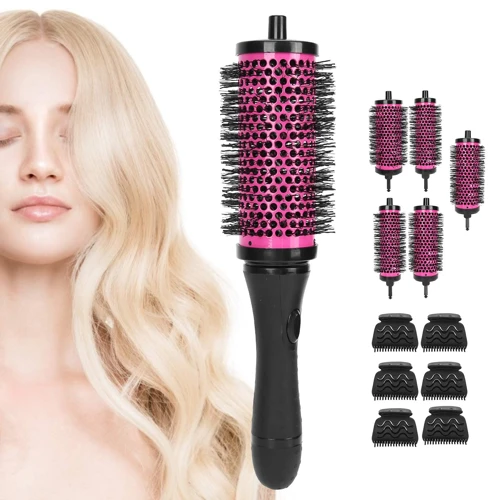
It’s understandable to want to quickly clean your brush rollers without giving much thought to the instructions. However, failing to check the manufacturer’s guidelines can lead to unpleasant outcomes. It may seem like an unnecessary step, but taking the time to read up on the specifics of your vacuum’s brush roller cleaning can save you money and prevent avoidable wear and tear. Don’t fall into the trap of assuming all vacuums are the same in terms of maintenance. By overlooking the manufacturer’s instructions, you risk potential damage to your device. Be sure to educate yourself on the appropriate way to maintain your vacuum’s rollers by reading the instructions or manual. Alternatively, you can learn from our previous article about vacuum brushes that are difficult to clean to help you avoid mistakes when cleaning roller brushes.
Why it’s a mistake
Using water or liquid cleaners to clean brush rollers is a common mistake that many people make. This mistake can cause damage to the brush’s bristles and weaken the roller’s overall performance. Here’s why:
1. Rust Formation: Moisture from water or liquid cleaners can cause rust formation on the roller’s metal components, affecting its longevity and functionality.
2. Brush Damage: Water or liquid cleaners can soak into the bristles, making them heavy and limp. This can lead to the bristles becoming misshapen, which can reduce the brush’s effectiveness in cleaning.
3. Electrical Damage: Using water or liquid cleaners on electronic brush rollers can cause electrical shorts that can damage the brush’s motor.
4. Residue Build-up: Water or liquid cleaners can leave behind residue that can build up on the roller, making it harder to clean in the future.
Instead of using water or liquid cleaners, it is important to use a dry method, such as a brush or vacuum, to remove any debris or hair clogging the roller. This will maintain the brush’s effectiveness and longevity.
How to avoid it
To avoid the mistake of not removing obstructions from your brush rollers, follow these steps:
- Inspect the brush roller: Before cleaning the brush roller, take a close look at it and check for any visible obstructions, like hair or debris.
- Unplug the vacuum: Always unplug the vacuum or turn off the power before cleaning the brush roller.
- Remove the brush roller: The next step is to remove the brush roller, which varies depending on the vacuum model. Consult the manufacturer’s instructions if you’re not sure how to do it.
- Remove the obstructions: Use a pair of scissors, tweezers, or a brush to remove any hair, string, or debris that is wrapped around the brush roller. Be sure to do this thoroughly, as any obstructions left on the brush roller can reduce its effectiveness and cause damage over time.
- Clean the brush roller: After removing the obstructions, clean the brush roller with a dry cloth or brush to remove any dirt or dust that has accumulated on it. Avoid using water or liquid cleaners to avoid damage to the brush roller.
- Reattach the brush roller: Once the brush roller has been cleaned and is obstruction-free, reattach it to the vacuum according to the manufacturer’s instructions. Be sure to secure it properly before using the vacuum again.
By following these steps, you can avoid the mistake of not removing obstructions from your brush rollers, which can lead to reduced effectiveness and even damage over time. Always consult the manufacturer’s instructions for specific cleaning and maintenance guidelines for your vacuum to ensure it stays in good working order.
Mistake 4: Using Dirty Tools
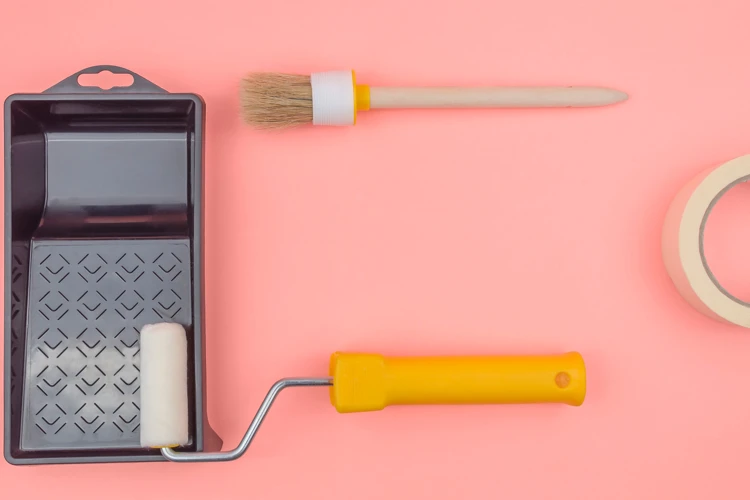
You may think that as long as you get the brush roller clean, it doesn’t matter what tools you use to clean it. However, using dirty tools is a common mistake that can lead to more harm than good in the long run. Dirty tools not only leave behind their own dirt and grime, but they can also introduce new bacteria and germs to your cleaning routine, leading to a buildup of harmful pathogens. In order to ensure the best cleaning results and protect your health, it’s essential to use clean tools when cleaning brush rollers. So, what should you use instead and how can you avoid this mistake? Let’s dive in.
Why it’s a mistake
When it comes to cleaning brush rollers, making the following mistakes can have adverse effects on the machine’s performance and durability. Let’s take a closer look at each of these mistakes to understand why they should be avoided.
| Mistake 1: Using Water or Liquid Cleaners |
| Using water or liquid cleaners can damage the brush rollers by causing rust or weakening the fibers. This can cause the rollers to become worn out more quickly, which can reduce their performance and even cause them to break. Additionally, using liquid cleaners can cause the bearings or other internal components to become damaged, which can lead to costly repairs. |
| Mistake 2: Not Removing Obstructions |
| Not removing obstructions from brush rollers can cause the machine to become clogged, which can reduce its suction power and make it less effective at cleaning. Obstructions can cause the rollers to become warped or bent over time, which can also affect their performance and lifespan. |
| Mistake 3: Not Checking Manufacturer’s Instructions |
| Not checking the manufacturer’s instructions before cleaning brush rollers can lead to using the wrong cleaning method or tool, which can damage the rollers or cause them to become less effective. It’s important to follow the manufacturer’s guidelines to ensure that the machine remains in good condition and that the rollers are cleaned thoroughly without damage. |
| Mistake 4: Using Dirty Tools |
| Using dirty tools during the cleaning process can transfer dirt or debris onto the rollers, which can cause them to become clogged or even scratch the rollers. It’s important to use clean tools and to wash them regularly to prevent the transfer of harmful debris or microorganisms onto the machine’s components. |
| Mistake 5: Not Removing Hair or Debris |
| Not removing hair or debris from the brush rollers can cause the machine to become clogged or even damage the rollers over time. This can reduce the machine’s effectiveness and even cause it to stop working entirely if the clog becomes too severe. Regularly removing hair and debris from the rollers is necessary for the machine to operate at optimal levels. |
| Mistake 6: Not Replacing Worn Rollers |
| Not replacing worn rollers can cause the machine to become less effective over time and even cause damage to other components. Worn rollers can reduce the machine’s suction power and make it less effective at cleaning, which can cause debris to become trapped inside the machine and cause additional damage. It’s important to replace worn rollers promptly to ensure that the machine is always operating at peak performance. |
| Mistake 7: Using Too Much Force |
| Using too much force when cleaning brush rollers can cause the rollers to become damaged, which can reduce their effectiveness and lifespan. It’s important to clean the rollers gently and to use a light touch to prevent damaging the fibers or other components of the rollers. |
| Mistake 8: Not Cleaning Brushes Regularly |
| Not cleaning brushes regularly can cause the machine to become clogged or even lead to the buildup of harmful bacteria or other microorganisms. Regular cleaning is necessary to prevent clogs and to ensure that the machine is operating at optimal levels. Cleaning the brushes regularly can also help to extend the machine’s lifespan and prevent future damage or repairs. |
By avoiding these common mistakes, you can clean your brush rollers effectively and safely, ensuring that your machine is always performing at its best.
How to avoid it
To avoid the mistake of not checking manufacturer’s instructions when cleaning brush rollers, there are a few steps you can take. These include:
| Step | Description |
|---|---|
| Step 1 | Read the manual: Take the time to read through the manufacturer’s instructions that came with your vacuum cleaner. Look for specific directions on cleaning brush rollers and make sure you follow them carefully. |
| Step 2 | Search online: If you no longer have the manual that came with your vacuum cleaner, try searching online for instructions. Many manufacturers have manuals available on their websites, or you can try a general search for your make and model. |
| Step 3 | Take note of warnings: The manufacturer’s instructions may include warnings about using certain cleaners or cleaning methods that could damage the brush roller or your vacuum cleaner. Take note of any warnings and avoid using any cleaners or methods that are not recommended. |
| Step 4 | Be gentle: When cleaning brush rollers, it’s important to be gentle and avoid using too much force. This can damage the rollers and affect their performance. Use a soft cloth or brush to gently remove any debris or hair. |
| Step 5 | Inspect the rollers: After cleaning, inspect the brush rollers to make sure they are in good condition. If you notice any damage, fraying, or excessive wear, it may be time to replace them. |
By following these steps, you can ensure that you are cleaning your brush rollers properly and effectively, without causing any damage to your vacuum cleaner. Remember to always refer to the manufacturer’s instructions and take note of any warnings or precautions.
Mistake 5: Not Removing Hair or Debris
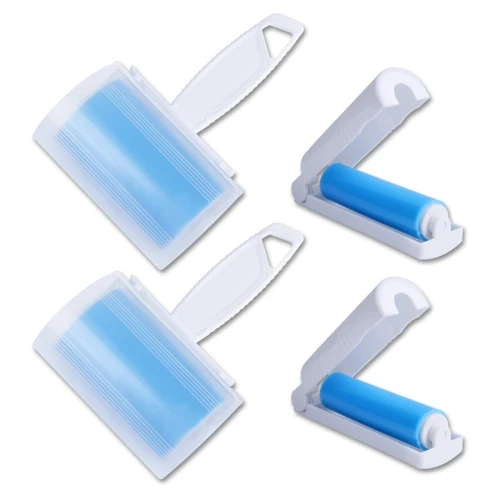
We all know the frustration of dealing with tangled hair and debris on our brush rollers. The last thing we want is for these irritants to damage our beloved cleaning tool. Yet, many people make the mistake of neglecting to remove them. This mistake may seem like a small oversight, but it can lead to bigger problems down the road. In this section, we’ll explore the reasons why not removing hair and debris is a mistake and how to avoid it so your cleaning process can be efficient and effective.
Why it’s a mistake
When it comes to cleaning brush rollers, making mistakes can lead to damage, decreased effectiveness, and a shorter lifespan for your equipment. Here are some key reasons why each mistake is a mistake:
– Using Water or Liquid Cleaners: Water and liquid cleaners can seep into the brush roller and cause damage to the motor or other components. This can also create a breeding ground for bacteria and mold, which can be harmful to your health.
– Not Removing Obstructions: Allowing obstructions to remain in the brush roller can lead to poor performance, decreased suction power, and can even cause damage to the motor. Over time, the obstruction can become compacted, leading to more serious issues.
– Not Checking Manufacturer’s Instructions: Each brush roller is designed differently, using different materials and technologies. Failing to check the manufacturer’s instructions can cause you to use the wrong cleaning method, leading to damage or decreased effectiveness.
– Using Dirty Tools: Dirty tools can carry bacteria and other microbes that can grow on your brush roller, leading to foul odors, decreased suction, and damage to the brush roller. Failing to clean your tools can also lead to scratches or other damage to the brush roller.
– Not Removing Hair or Debris: Allowing hair or debris to remain on the brush roller can cause it to become clogged or jammed. This can cause decreased suction power, damage to the motor, and decreased effectiveness over time.
– Not Replacing Worn Rollers: Over time, brush rollers can become worn or distorted, decreasing their effectiveness and causing damage to other components. Failing to replace worn rollers can lead to decreased suction power, poor performance, and other issues.
– Using Too Much Force: Using excessive force to clean the brush roller can cause damage to the motor or other components. This can also cause the brush roller to become distorted, leading to decreased performance and other issues.
– Not Cleaning Brushes Regularly: Failing to clean your brush rollers regularly can lead to the buildup of bacteria, mold, and other microbes. This can cause foul odors, decreased suction power, damage to the brush roller, and even health issues for those using the equipment. It’s important to clean your brush rollers regularly to ensure their longevity and effectiveness.
How to avoid it
To avoid the mistake of not removing obstructions from your brush roller, follow these simple steps:
- Inspect the roller: Before cleaning the brush roller, inspect it closely for any obstructions, such as hair or debris, that may be tangled in the bristles. Use a pair of scissors or tweezers to carefully remove any visible obstructions.
- Detach the roller: Depending on your vacuum or cleaning tool, you may need to detach the brush roller from the machine or cleaning tool before proceeding to clean it. Refer to the manufacturer’s instructions for guidance on how to do this properly.
- Clean the brush roller: Once the brush roller is detached, use a specialized roller cleaning tool or a toothbrush to gently clean the bristles and remove any remaining obstructions. Be sure to clean the end caps and bearings as well. Avoid using water or liquid cleaners, as this can damage the roller.
- Reattach and test: Once the brush roller is clean and free of obstructions, reattach it according to the manufacturer’s instructions. Test the roller to ensure that it is spinning smoothly and effectively picking up debris.
By taking these precautions and following the correct steps, you can avoid the mistake of not removing obstructions and ensure that your brush roller is working at its best. Remember to always consult the manufacturer’s instructions before attempting to clean or detach any parts of your cleaning tool.
Mistake 6: Not Replacing Worn Rollers
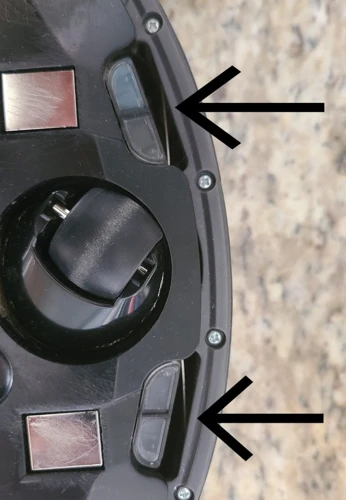
When it comes to keeping your vacuum cleaner in top shape, replacing worn rollers is an important part of the process. Over time, the bristles on the brush rollers can become frayed and worn, reducing the effectiveness of the vacuum in cleaning carpets and upholstered surfaces. Ignoring this issue can lead to poor cleaning results and potentially costly repairs. But how can you tell when it’s time to replace the rollers? Let’s explore some common signs that your rollers have reached the end of their lifespan and what you can do to prevent this mistake.
Why it’s a mistake
Cleaning brush rollers can be a daunting task, but avoiding these common mistakes can make the process much easier. Let’s take a look at the reasons why each mistake should be avoided:
| Mistake | Why it’s a mistake |
|---|---|
| Using water or liquid cleaners | Brush rollers are sensitive to moisture and can become damaged if water or liquid cleaners are used. Water can cause rust or corrosion to form on the metal parts, while liquid cleaners can damage the bristles or cause them to become matted. |
| Not removing obstructions | Obstructions such as hair, string, or debris can get tangled in the brush roller and prevent it from spinning properly. This can cause the vacuum to lose suction or even damage the motor over time. |
| Not checking manufacturer’s instructions | Different brush rollers require different cleaning methods, and not following the manufacturer’s instructions can lead to improper cleaning or even damage to the brush roller. |
| Using dirty tools | Dirty tools can transfer dirt, oil, or bacteria onto the brush roller, making it less effective at cleaning or even causing it to become damaged over time. |
| Not removing hair or debris | Hair and debris can accumulate on the brush roller over time, causing it to become less effective at cleaning and preventing it from spinning properly. |
| Not replacing worn rollers | Worn rollers can become less effective at cleaning, causing the vacuum to lose suction and leaving dirt and debris on the floor. Continuing to use worn rollers can also cause damage to the vacuum motor over time. |
| Using too much force | Using too much force when cleaning brush rollers can cause the bristles to become bent or damaged, leading to an uneven cleaning surface or premature wear of the roller. |
| Not cleaning brushes regularly | Regular cleaning of brush rollers is important to maintain their effectiveness and prevent the accumulation of hair, debris, or bacteria. Failure to clean brushes regularly can result in a less efficient cleaning process and even damage to the vacuum over time. |
These mistakes may seem small, but they can have a big impact on the effectiveness and lifespan of your vacuum’s brush rollers. By avoiding these mistakes and using proper cleaning techniques, you can help ensure that your vacuum remains effective and efficient for years to come.
When to replace rollers
Knowing when to replace the brush roller is vital to maintaining the effectiveness of a vacuum cleaner.
Here are a few signs that indicate it’s time to replace the brush roller:
- Worn bristles: Over time, the bristles of the brush roller will start to wear down. This can lead to less efficient carpet cleaning and eventually lead to permanent damage to the carpet fibers if not attended to.
- Clogs: Debris can get tangled around the brush roller and cause problems. If the roller gets clogged repeatedly, it could be a sign that it has served its time and is time for a replacement.
- Noise: If the brush roller is making loud noises, it might be due to old age and wear and tear. This can lead to less effective vacuuming and eventually cause the vacuum cleaner to break down altogether.
- Reduced suction: A worn brush roller can create drag which can cause the vacuum to have reduced suction as the motor works harder to maintain performance.
Replacing the brush roller will ensure that the vacuum cleaner continues to function properly and effectively. It is important to check the manufacturer’s instructions for how often to replace the brush rollers, and to make sure to only use replacement parts that are compatible with the specific vacuum model.
Mistake 7: Using Too Much Force

Cleaning brush rollers is an important task, but it’s easy to get carried away with enthusiasm and accidentally damage the equipment. One common mistake people make when cleaning brush rollers is using excessive force while scrubbing away at stuck-on dirt and debris. It can be tempting to apply additional pressure to get the job done quickly, but this can cause more harm than good. Let’s take a closer look at why using too much force is a mistake and what you can do to avoid it.
Why it’s a mistake
Using water or liquid cleaners on brush rollers is a mistake that many people make when trying to clean them. However, this can cause a lot of damage to the roller and the entire vacuum cleaner.
The Effects of Water or Liquid Cleaners on Brush Rollers
| | |
|—|—|
| Damage to Roller Structure | The bristles in the brush roller are often made of plastic, and liquid can cause them to become weak and brittle, leading to breakage over time. |
| Damage to Bearings | Water or liquid cleaners can also damage the bearings that keep the brush roller in place, leading to a loss of suction power or complete mechanical failure. |
| Electrical Hazard | Removing the brush roller and getting water near the motor can create an electrical hazard that can be very dangerous to the user. |
The Alternatives to Water or Liquid Cleaners
Instead of using water or liquid cleaners, it’s best to use a dry method of cleaning. This can be achieved by using a vacuum cleaner or a brush tool specifically designed for removing hair and debris from brush rollers. Another great method is to use a cleaning tool like a rubber eraser, which can effectively remove hair and debris from the roller without damaging the structure or bearings.
By avoiding the mistake of using water or liquid cleaners on brush rollers, you can extend the life of your vacuum cleaner and achieve a more effective clean for your home.
How to avoid it
When it comes to avoiding the mistake of not removing obstructions from your brush rollers, there are a few steps you can follow. Here are some tips to help you avoid this common issue:
- Inspect the brush roller before cleaning. Before you start cleaning your brush roller, take a moment to inspect it for any obstructions. Use your fingers or a pair of tweezers to remove any visible debris, hair, or other materials that may be tangled in the brush.
- Remove the brush roller from the vacuum. To get a better look at the brush roller, you should remove it from the vacuum. Most brush rollers can be easily removed with a quick-release button or by unscrewing some bolts.
- Clean the brush roller with a stiff brush. Once you have removed any visible obstructions, it’s time to give the brush roller a good cleaning. Use a stiff brush or old toothbrush to gently scrub the roller to remove any remaining debris or dirt.
- Use a vacuum attachment. To get rid of any dust or smaller debris that the brush roller may have missed, use a vacuum attachment to clean the roller. This will help ensure that your brush roller is completely clean before you reattach it to your vacuum.
- Replace the brush roller if it’s damaged. If you notice that the brush roller is damaged, such as if there are missing bristles or if the roller is cracked, it’s time to replace it. A damaged brush roller can not only affect your vacuum’s performance but also damage your floors.
By following these simple steps, you can avoid the mistake of not removing obstructions from your brush roller. Taking care to keep your brush roller clean and free of debris will help ensure that your vacuum continues to work effectively and efficiently.
Mistake 8: Not Cleaning Brushes Regularly
As simple as it may seem, neglecting to clean your brush rollers regularly can lead to a range of issues. Over time, the accumulation of hair, dust and debris on your brush roller can hinder the machine’s performance, leading to reduced suction power and an overall lackluster cleaning experience. Not to mention, dirty brushes can be a breeding ground for bacteria and germs, making it imperative to clean them on a regular basis. In this section, we’ll explore the importance of cleaning your brush rollers and how often you should do it. So let’s dive in and discover the best practices for keeping your brushes in tip-top shape!
Why it’s a mistake
Using water or liquid cleaners to clean brush rollers is a mistake because it can damage the motor and other parts of the vacuum cleaner. The table below explains in detail why it’s a mistake to use water or liquid cleaners:
| Reasons Why It’s a Mistake to Use Water or Liquid Cleaners: |
|---|
| 1. Can damage the motor: Water or liquid cleaners can seep into the motor and cause it to malfunction or even stop working [1]. |
| 2. Can cause electrical problems: Water can cause short circuits and damage the electrical components of the vacuum cleaner [2]. |
| 3. Can affect performance: Water or liquid cleaners can damage the brush rollers, which can affect their ability to pick up dirt and debris. This can lead to a decrease in the vacuum cleaner’s performance [3]. |
References:
[1] “Cleaning Brush Rollers in a Vacuum Cleaner”. DoItYourself.com.
[2] “How to Clean Your Vacuum Cleaner”. The Spruce.
[3] “A Guide to Cleaning Your Vacuum Cleaner”. Real Simple.
How often to clean brushes and why it’s important
Proper maintenance of your brush rollers is essential to maintaining your vacuum’s performance. Regular cleaning of your brush rollers is a simple task that can prevent more serious issues down the line. But how often should you be cleaning your brushes and what are the reasons behind it?
The importance of cleaning your brushes regularly
Over time, dirt and debris can become lodged in your brush rollers. This can cause them to become less effective in picking up dirt and can even cause damage to the rollers themselves. A build-up of hair or other debris can also cause your vacuum to emit unpleasant odors. Regular cleaning can prevent these issues and ensure your vacuum is running at optimal performance.
How often to clean your brushes
The frequency with which you should clean your brush rollers depends on how often you use your vacuum. If you have pets, you may need to clean your brushes more frequently. As a general rule, it’s recommended that you clean your brushes at least once a month. However, if you use your vacuum frequently or have pets, you may need to clean them more often.
To determine how often you should clean your brush rollers, check them regularly for signs of a build-up of hair or debris. If you notice a decrease in performance, odd sounds, or unpleasant odors, it’s definitely time to clean them.
How to clean your brush rollers
To clean your brush rollers, start by unplugging your vacuum and removing the brush roller. Use scissors or a seam ripper to carefully cut and remove any hair that has become wrapped around the roller. Once you’ve removed as much hair as possible, use a soft-bristled brush or toothbrush to loosen any dirt or debris. You can also use a damp cloth to wipe down the roller.
If your rollers are particularly dirty, you may need to remove them completely and soak them in warm, soapy water. Be sure to fully allow the rollers to dry before reattaching them to your vacuum.
By following these simple steps and cleaning your brush rollers regularly, you can extend the life of your vacuum and ensure it is running at its best.
Conclusion
In conclusion, cleaning brush rollers is an essential part of maintaining the effectiveness and longevity of your vacuum cleaner. By avoiding the common mistakes outlined in this article, you can ensure that your vacuum cleaner operates at optimal levels.
Using water or liquid cleaners can damage the brush rollers and potentially harm the vacuum motor. Instead, use a dry cloth or brush to remove dirt and debris.
Removing obstructions is important to prevent damage to the brush rollers and vacuum cleaner. Take the time to inspect the cleaning tool regularly to prevent clogs and blockages.
Checking the manufacturer’s instructions is crucial to ensure that you use the proper cleaning technique and products on your brush rollers.
Using dirty tools can spread germs and bacteria and damage the brush rollers. Regularly clean the tools with soap and hot water before and after each use.
Removing hair or debris is important to prevent the buildup of dirt and debris that can damage the brush rollers and clog the vacuum cleaner.
Replacing worn rollers is key to maintaining the efficiency of your vacuum cleaner. If the rollers are worn or damaged, they can’t effectively remove dirt and debris from your floors.
Using too much force can damage the brush rollers and vacuum cleaner. A gentle touch is all that is needed to effectively remove dirt and debris.
Cleaning brushes regularly is essential to keep your vacuum in good condition. Depending on usage, it is recommended to clean the brush rollers once a week or every two weeks.
By avoiding these common mistakes and regularly maintaining your vacuum cleaner, you can keep your home clean and healthy while also extending the lifespan of your cleaning tools. Keep these tips in mind and enjoy a cleaner home with a more efficient vacuum cleaner.
Frequently Asked Questions
1. Can I use water to clean brush rollers?
No, using water or liquid cleaners is not recommended as it can damage the brush rollers.
2. How can I avoid obstructions when cleaning brush rollers?
You can avoid obstructions by checking the brush rollers for any hair or debris before cleaning and using a tool to remove any obstructions.
3. Is it important to follow the manufacturer’s instructions for cleaning brush rollers?
Yes, it is important to follow the manufacturer’s instructions to avoid damaging the brush rollers.
4. Why is using dirty tools a mistake when cleaning brush rollers?
Using dirty tools can transfer dirt and debris onto the brush rollers, which can affect their performance and damage them over time.
5. How often should I remove hair or debris from brush rollers?
You should remove hair or debris from brush rollers after every use to maintain their performance and prevent damage over time.
6. When do I need to replace worn brush rollers?
You need to replace worn brush rollers once they start to show signs of wear and tear, such as decreased performance or frayed bristles.
7. Why is using too much force a mistake when cleaning brush rollers?
Using too much force can damage the brush rollers and affect their performance over time.
8. How often should I clean the brushes on my vacuum cleaner?
You should clean the brushes on your vacuum cleaner at least once a month, or more often if you have pets or frequently vacuum high traffic areas.
9. Can I use a steam cleaner to clean brush rollers?
No, using a steam cleaner is not recommended as it can damage the brush rollers.
10. How can I avoid damaging the brush rollers when cleaning them?
You can avoid damaging the brush rollers by using a soft-bristled brush or tool, avoiding water or liquid cleaners, and being gentle when cleaning them.
